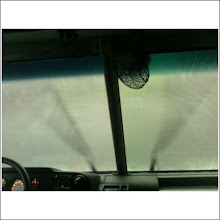We are in the 2nd decade of the extraordinary historical medium known as the web. Although is has its many advantages it also has many disadvantages. The web helps connect a massive amount of people from different locations. It allows ease of communication and accessibility of information. Information can be freely published, updated, and revised. The negatives or disadvantages of this medium is its stability. Although not always particularly stable, historians have used this as a medium of conveying and interpreting information. Thus, transforming research presented by this medium into its own genre; digital history.
“What is digital history?” you may ask. According to W.G. Thomas III, whom I believe has the most straightforward definition, ”Digital history is an approach to examining and representing the past that works with the new communication technologies of the computer, The internet network, and software systems...To do digital history then, is to create a framework, ..through the technology for people to experience, read and follow and argument about a historical problem.
Digital history can be divided by stages, currently consisting of 3 stages:
I. communication and course management tools (email, web CT)
II. Involved creation of hands on inquiry and allowed students to “do” history
III. Emphasizes on active learning, collaboration, and enhanced interactions (wikis, blogs, social sites)
IV. (yet to come) 3-dimensional virtual reality environments which allow students to navigate historical settings.
Many Historians believe that of all the disciplines, the web seems tailor made for history. Among these historians is E. L. Ayers, author of “The Pasts and Futures of Digital History.” He believes that due to the nature of the change within the technologies consistent of the discipline that computers are more and more appealing to historians and that “understanding the medium and seizing for ourselves the opportunities the medium offers,” we can touch and help others see ‘the past present, and future in new ways. ‘
Seizing the opportunity and the knowledge of this new medium seems foreign and challenging but this course allows for us to take what I believe is the giant step towards achieving it and providing us with the steps and background to successfully do so. By creating a historical webpage we are not only empowering ourselves with the knowledge of the incorporation of technology and history, but we are also conveying a powerful angle of a message of history through our very own point of view.
I have thus far established an account on a web building site. Although completely new to the idea of contributing to the world of digital history I have learned how to add pages and name them and the basics such as inserting pictures and text. I decided to name my page Women&War and want it to consist of two sides of the argument on women in combat and also consist of an interview of a female veteran. So far I have received approval from the female veteran to use some of her actual photographs and had agreed to be interviewed on her experiences. I have emailed several male veterans on their opinion on the actual subject (most are against the idea of women in combat). Right now I just need to re-name the pages so the words fit on the tabs, change the page layout, and learn how to incorporated video and java. I can hardly wait. ;)
Subscribe to:
Post Comments (Atom)

No comments:
Post a Comment